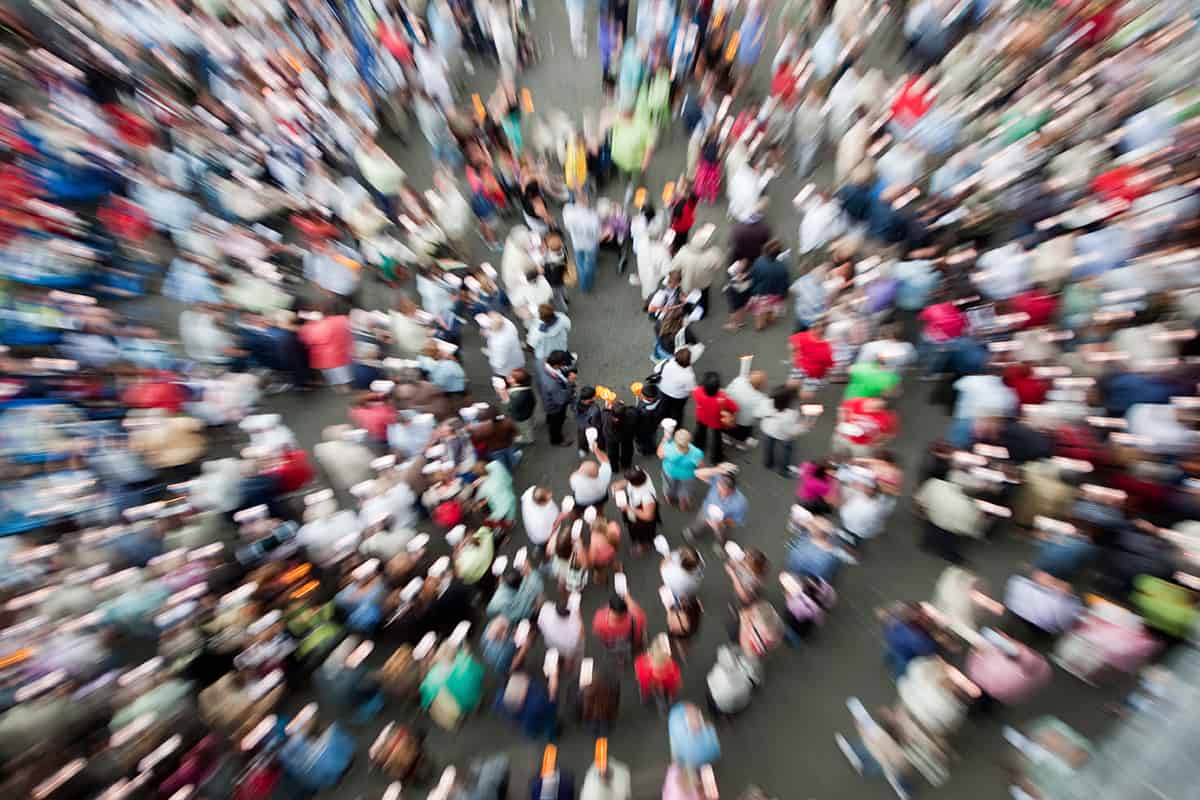
The Nobel Prize for Physics is almost upon us, but before we know who is heading to Stockholm (maybe via Zoom again), the Ig Nobel prizes take the limelight. Meant to make you “first laugh, then think”, the Ig Nobels were held online yesterday for the second time in a row given the ongoing COVID-19 pandemic.
This year’s physics prize went to Alessandro Corbetta from Eindhoven University of Technology and colleagues for explaining why pedestrians don’t constantly collide with one another when walking. The researchers spent six months taking “high-resolution” data of people moving in a busy train station in Eindhoven and modelled their constantly evolving trajectories using statistical physics.
In a similar vein, the “kinetics” Ig Nobel prize examined the role that distraction plays when people are on the move. The researchers from Japan, Switzerland and Italy were rewarded for work that showed why sometimes people do collide with one another and why avoidance manoeuvres are normally a cooperative process. At least it goes some way to showing why people glued to their phones when walking are more likely to be on a collision course. The other Ig Nobel awardees from yesterday can be found here.
Sloshing coffee
I think it’s safe to say that many physicists love a good cup of coffee. Indeed, if you go to a physics department it’s not uncommon to see trails of coffee drops leading from the coffee lounge back to offices, classrooms and labs (hygiene rules permitting). But it has been left to engineers at Arizona State University to work out the physics of why we usually don’t spill our coffee when we walk.
Ying-Cheng Lai, Brent Wallace and colleagues have studied the coffee-sloshing process using a mathematical cart–pendulum model, which describes the system as mass that hangs on a string beneath a moving cart.
Previously, researchers at Northeastern University had studied how people prevent a ball in a round-bottomed cup from sloshing around. They found that people applied either a low-frequency or high-frequency oscillation to the cup to dampen the motion of the ball.
The curious thing is that for the low-frequency strategy, the oscillations were applied in phase with the motion of the ball, whereas they were applied in antiphase in the high-frequency technique. Now, the Arizona team has used their cart–pendulum model to gain further insights into this transition.
They found that for weak oscillations, there was a sharp switch between in phase and antiphase control at the system’s resonant frequency – something that they said can be fully understood using linear systems control theory. For stronger oscillations, the duo discovered a transition region, rich in behaviour, where the motions of the cart and pendulum are not synchronized.
You might be wondering why the researchers are interested in how humans stop coffee from sloshing around. Although we are extremely good at achieving exquisite control over a complex system like coffee in a cup, humans have very little understanding of how we actually do it. Knowing how could provide important information for creating better prosthetics and robots that are able to perform delicate tasks.
